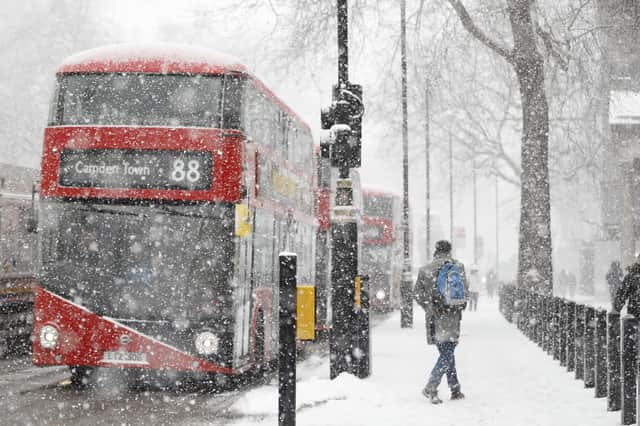Is a White Christmas rare? When does it snow in the UK and what are the chances of a white Christmas


When we think of Christmas films, we imagine cities carpeted in snow with lights glittering across the skyline. However, in reality, UK Christmas' are not like that, and any blankets of snow quickly turn into thin sheets of ice instead.
But as the temperatures drop in the lead-up to winter, we are all holding our breath and hoping for a white Christmas. However, statistics from the Met Office have revealed that the chances of a white Christmas in the UK have decreased as the world grows hotter due to climate change.
Advertisement
Hide AdAdvertisement
Hide AdSo why does snow fall later (or earlier) in the year, and what are the chances of a White Christmas in 2023? Here is what you need to know.
Why White Christmases have been rarer
Met Office data reveals that snow was much less likely to fall on Christmas Day in the 2010s than it was in the 1960s, as temperatures across the UK for Christmas Day has increased due to Climate Change.
The data shows only eight white Christmases were observed at 44 analysed weather stations in the 2010s, whereas in the 1960s, 57 stations recorded snowfall.
In the 1970s this dropped to 18, but picked up to 46 stations in the 1990s. However, this trend applies to the whole month of December, which is now less snowy than it previously was, with all regions across the UK seeing the number of instances of snow on the ground drop.
Advertisement
Hide AdAdvertisement
Hide AdLondon is the UK's least snowy region recording a three-quarters drop in the average number of snowy December days in 2011-21 compared with 1970-2010, with an average of just one snowy December day every three years.
Northern Scotland – the snowiest part of the UK – had an average of 6.1 snowy December days from 1970 to 2010, but an average of 4.2 over the past 10 years. Average temperatures on Christmas Day have also increased throughout the UK over the same period.
When does it snow in the UK?
For most of the UK, Christmas is only at the beginning of the period when it's likely to snow, and it is more likely to snow between January and March than in December. On average snow, or sleet falls 3.9 days in December, compared to 5.3 days in January, 5.6 days in February and 4.2 days in March - we are more likely to have a White Easter than a White Christmas.
In Scotland, snow or sleet falls on 38.1 days on average. Statistically, the snowiest place in the UK is the Cairngorms in Scotland, with 76.2 days of snow or sleet falling on average. Cornwall is the least likely to get snow, with an average of only 7.4 days of snow or sleet falling a year.
What do we need for snow to fall?
Advertisement
Hide AdAdvertisement
Hide AdFor snow to fall, moisture must be present in the atmosphere, as snowstorms also rely heavily on temperature, but not necessarily the temperature on the ground. Snow forms when the atmospheric temperature is at or below freezing. Snowflakes that descend through moist air that is slightly warmer than 0 °C will melt around the edges and stick together to produce big flakes.
Comment Guidelines
National World encourages reader discussion on our stories. User feedback, insights and back-and-forth exchanges add a rich layer of context to reporting. Please review our Community Guidelines before commenting.
